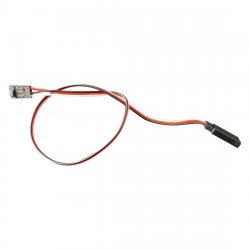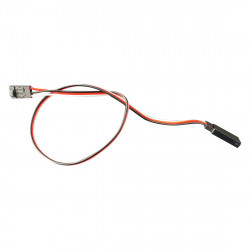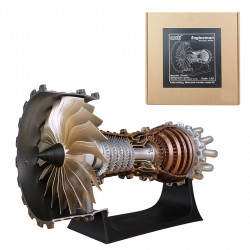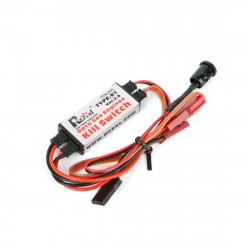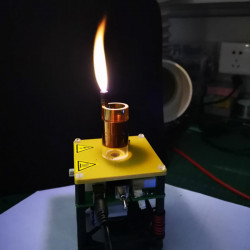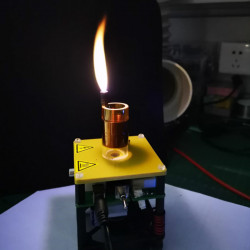
What is The Difference Between Brushed and Brushless RC Cars
Brushless RC vehicles and brushed RC cars are the two primary types into which RC cars are often divided. Since this is the most significant way to identify RC cars, it has a substantial impact on your decision to buy and modify one.
However, what is the difference between brushless and brushed? We'll outline their differences and provide you with all the information you require in this post.
Motor Design of Brushed vs Brushless RC Cars
Gaining a better grasp of the RC motor is essential to distinguishing between brushed and brushless RC cars. The terms "brushed" and "brushless" describe the type of motor installed and the technology that the motor employs.
A brushless RC car motor is electrical, while a brushed RC car motor is mechanical. This is the main distinction between the two.
Brushed Motors Overview
The name "brushed motor" comes from the fact that a brushed motor is mainly composed of carbon brushes and pads. The commutator is another part of the motor that the pads come into contact with. This generates a magnetic push-and-pull motion that creates friction and heat, resulting in movement that enables the RC car to operate.
Brushless Motors Overview
As the name suggests, carbon pads that rub against other motor parts are not used in brushless motors. Instead, the procedure is reversed. The motor casing spins and rotates around the coils rather than the other way around. However, the operation is far more intricate and sophisticated. Compared to a brushed motor, this method produces far less friction.
The Advantages of a Brushed Motor
For very straightforward reasons, brushless motors are not as widely used or mass-produced as brushed motors.
For starters, because the design is more straightforward to construct, brushed motors are far less expensive to make. This consequently lowers the cost of purchasing brushed motors. This is the main factor contributing to the incredible popularity of brushed motors. Unless otherwise noted, the majority of RC cars that you purchase on the market have brushed motors.
Another advantage of brushed motors is their ease of usage and customization. A brushed motor has fewer parts and is simpler to handle if you ever wish to disassemble your RC car or swap it out for a new motor.
In fact, compared to brushless motors and brushless RC cars, many users prefer brushed motors for lower speeds or low cycles because they consume less energy in these conditions. Because of this, brushed motors are a fantastic option for those who like to use their RC cars for leisure activities rather than racing.
The Advantages of a Brushless Motor
As previously said, brushless motors are more expensive than brushed motors. However, the more costly motor is also likely to have many additional functions. In many respects, brushless motors are far more valuable while being more expensive and sophisticated.
For starters, when everything is equal, brushless motors are always quicker than brushed motors. This is due to the fact that these motors generate significantly less friction, as previously mentioned. Less resistance results from less friction, and less resistance results in less internal stress, which lowers the RC car's top speed. Consequently, racing enthusiasts always favor brushless motors.
Another significant advantage is that brushless motors require significantly less maintenance. This has to do with the absence of friction once more. Mechanical parts get closer to disintegrating the more movement and friction they experience. This is just a natural law that applies to computers, automobiles, factory machinery, and remote-controlled autos.
Brushless motors require much fewer repairs or replacements than their brushed counterparts since their electrical components are nearly entirely frictionless.
Furthermore, brushless motors are more energy-efficient and better suited for longer races or sessions. As a result, they work better with batteries that have longer lifespans.
The ability to enhance your RC car's handling and accuracy is the final advantage of brushless motor design. When negotiating tight turns, you'll notice that your vehicle turns more precisely and sharply. Because of this, they are better suited for more seasoned RC car enthusiasts, but once you experience this level of control, it's difficult to resist.
Can You Upgrade an RC car that Came with a Brushed Motor to a Brushless Motor?
Yes, provided the car is compatible with the more potent technology, it is possible to install a brushless motor in an RC car that was initially equipped with a brushed motor.
You must remember that some RC models may not be able to keep up with brushless motors due to their speed. Not every RC car has tires or gears designed to withstand the speeds that brushless motors can deliver.
Even though your RC car's more mechanical components can withstand higher speeds, the electronics may not work with the alternative motor type.
Before choosing to upgrade, make sure your remote-controlled car is compatible with brushless motors.
Do Brushless Motors Last Forever?
No, just like their brushed counterparts, brushless motors will ultimately deteriorate and need to be replaced. As previously stated, the absence of friction significantly increases their lifespan, yet they will eventually need to be maintained or replaced entirely.
For comparison, a typical brushless motor can operate for tens of thousands of hours before experiencing any issues, but many brushed motors can only last roughly 2500 hours before needing maintenance. If you're wondering why brushless motors cost extra, keep this in mind.
Conclusion
Now that you know the difference between brushless and brushed motors, you may choose the best RC car motor for you, or you can upgrade if you want more speed!
